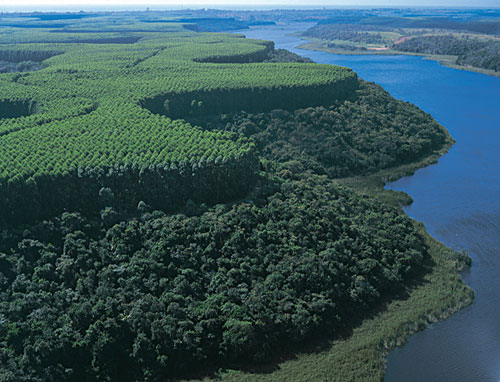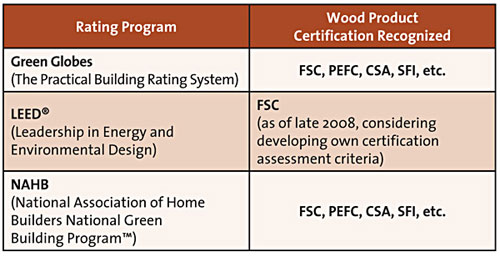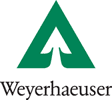Hardwoods in Green Building: Plantation-grown Eucalyptus Makes its Mark as a Versatile, Sustainable Exotic Species
In terms of diminishing soil and water quality, an Aracruz nutrient balance survey during a complete eucalyptus crop cycle found that compared to geochemical surveys of agricultural areas in Europe and the United States, the flow of nutrients in the study area were low, due primarily to the small amount of nutrients required by eucalyptus in comparison with other crops. Nitrogen was the only nutrient with a slightly negative balance. To address this deficiency plantation owners can increase the amount of nitrogen applied in fertilizing to ensure its cycling through to maintain appropriate levels of organic matter. The study further found no relation between the fertilizer applied to the trees and the level of nutrients in the water bodies, nor any losses of applied nutrients to impact the quality of the streams and rivers.
 |
Some eucalpytus plantations integrate native species to increase biodiversity. Photos courtesy of Weyerhaeuser |
Â
A 10-year study also by Aracruz that used birds as bioindicators of environmental quality in a eucalyptus plantation integrated with natural forest demonstrated a number of important considerations. Before the eucalyptus harvest, the watershed functioned as a forest environment, as demonstrated by the number of species that were spotted in both the remnants of the Atlantic Rainforest in the slope areas, as well as in the plantation stands. At the end of the wood cultivation/pulp cycle, a total of 85 species used resources that were encountered in both environments. Furthermore, individual birds of these species established their territories in the plantation stands, some of them hundreds of meters distant from the indigenous vegetation. Since birds only remain in locations where they are able to obtain food and protection from predators and climatic constrains, they bear witness to the use of local resources in eucalyptus stands and the associated understory of native species. Following the harvest, the native vegetation served to shelter these birds, maintaining local populations of the species. Once the denser growth of the plantation trees and understory appeared, the birds returned to the plantation areas. The study found that no species present before felling in the watershed disappeared from the commercial stands during the period following the eucalyptus harvest. Four bird species were discovered living entirely within the commercial plantations. A number of individual birds that had been banded before the felling of the watershed stands returned during the course of the new eucalyptus growth cycle. Others were absent during the first years after new planting, reappearing four years later.
Further, in the movement to re-colonize replanted stands or where eucalyptus stumps are regenerating, the birds also act as seed dispersal agents for a number of different plantation understory plants. In this way, they accelerate the restoration process of this vegetation layer under the eucalyptus canopy. This has the effect of restoring both the pre-harvest structure as well as the permanence of species that have adapted to the plantations and the associated understory. As a result, in areas where commercial stands are interspersed with native vegetation and dense understory, bird species have been shown to flourish.
Rating Systems
Design professionals specify certified wood to meet their own green building criteria or as part of earning points under designated green building certification programs. In the United States, three main building programs rate the green aspects of building programs: Green Globes, Leadership in Energy and Environmental Design (LEED), and the National Association of Home Builders National Green Building Program. As can be seen in the accompanying figure, all three rating systems award points for wood as a bio-based material, but vary in the types of certified wood they currently recognize. Currently, FSC certified products are the only certified wood products accepted by LEED, which is currently considering developing its own rating criteria. The NAHB standard recognizes all credible forest certification programs.
 |
|
Chart: Weyerhaeuser |
Â
CONCLUSION:Â Hardwoods - A Viable Green Option
Given the environmental advantages of wood and the availability of third party sustainability certification, hardwoods - including tropical woods - can be a viable part of green building. As architects seek cost-effective, sustainable materials, properly sourced tropical woods like eucalyptus, which can be rapidly replenished, have the potential to provide an attractive, durable solution that is a replacement for other more expensive and possibly dwindling species.
|









